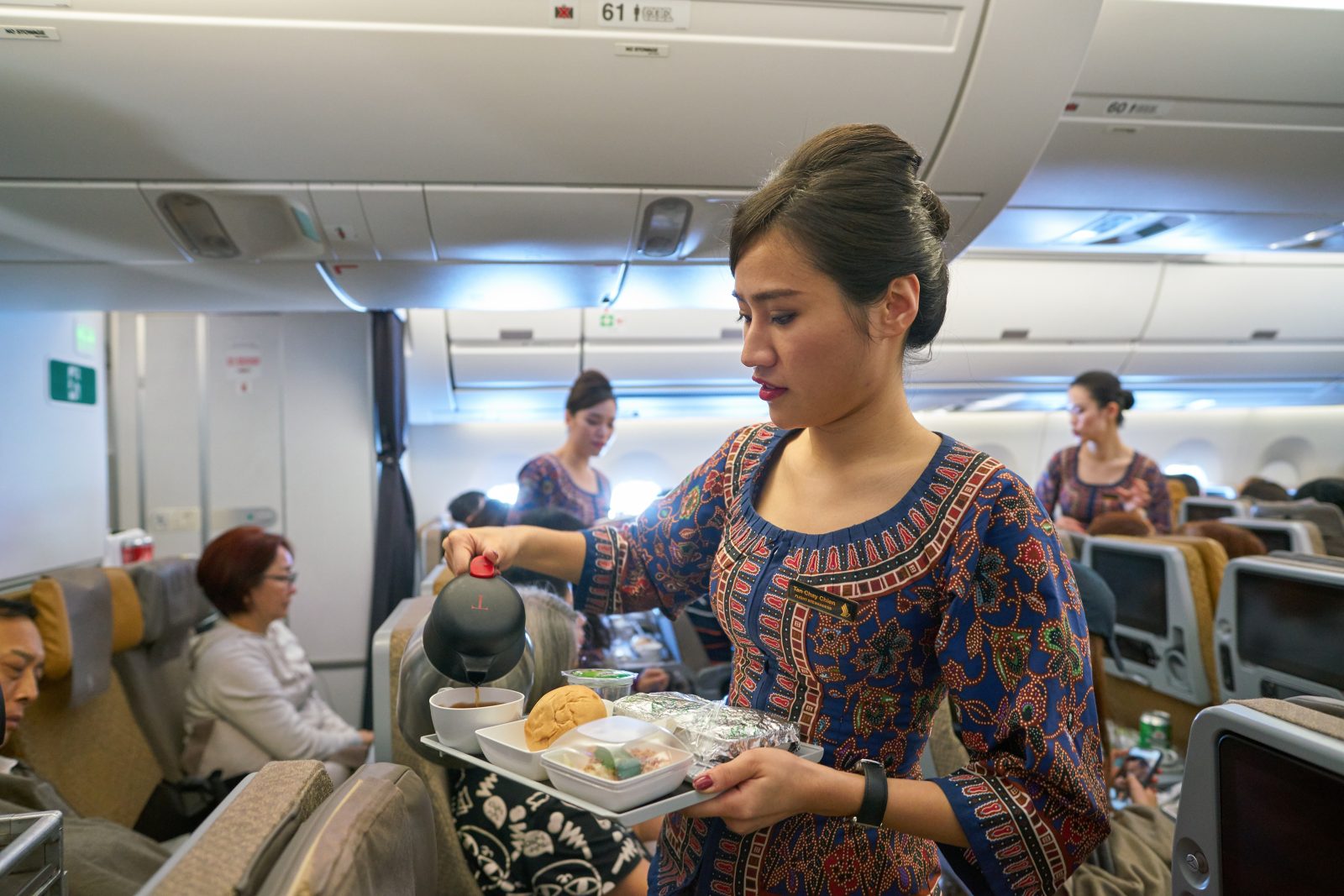
Singapore Airlines has confirmed that it is taking a more ‘cautious approach’ to meal service following the severe turbulence incident aboard flight SQ321 on Tuesday, which left one passenger dead and dozens seriously injured, including 22 who have suffered spinal cord injuries and six who have sustained brain and skull trauma.
The airline says that it will suspend any meal service whenever the seatbelt sign is switched on and will direct flight attendants to strap themselves into their jumpseats unless they are helping a passenger.
The decision will be a big change for Singapore Airlines, where flight attendants have generally been expected to carry on working in light turbulence, with carts taken into the cabin for meals to be served.
Like the vast majority of airlines, Singapore Airlines does not serve hot drinks when the seatbelt sign is on, even if there isn’t any active turbulence, because the pilots have assessed that the plane might be affected by a sudden jolt or bump that could lead to a burn injury.
Singapore Airlines’ new approach to service is an acknowledgement that just like scold injuries from a spilt cup of coffee, more serious turbulence-related injuries could happen even if the ride feels relatively smooth.
In a statement, a spokesperson for Singapore Airlines confirmed: “In addition to the suspension of hot beverage service when the seat belt sign is on, the meal service will also be suspended.”
“Pilots and cabin crew are aware of the hazards associated with turbulence. They are also trained to assist customers and ensure cabin safety throughout the flight,” the statement continued.
The idea behind the policy isn’t that flight attendants will suddenly disappear from passenger view, with the SIA spokesperson adding:
“Crew members will also continue to advise passengers to return to their seats and secure their seat belts. They will also monitor customers who may require assistance, including those in the lavatories.”
Flight SQ321 from London Heathrow to Singapore was flying across the Irrawaddy Basin when it was suddenly rocked by severe turbulence. With just two hours left of a 13-hour flight, the cabin crew were preparing for a meal service, although the seatbelt signs were already on due to forecast bad weather in the region.
Passengers and crew who weren’t strapped in when the Boeng 777-300 encountered the patch of severe turbulence were flung up towards the ceiling, causing serious head, neck and back injuries.
By Friday, 40 passengers and two crew members remained in a Bangkok hospital where the plane diverted after the pilots declared a medical emergency. At least one crew member has had to have a spinal injury due to the injuries sustained during Flight 321.
Matt’s take
The way that airlines deal with turbulence, especially in terms of cabin service, can vary massively from one carrier to the next. Traditionally, we see US-based airlines having a much more cautious approach, with flight attendants frequently ordered to suspend cabin crew and take their jumpseats even if there isn’t any active turbulence.
On the other end of the spectrum, some Asian carriers are more willing to carry on regardless in mild and sometimes even in moderate turbulence. This is what makes SIA’s new policy an unusual but welcome decision, which is finally putting safety before service.
Don’t, however, expect other airlines to quickly follow suit. In fact, while Singapore Airlines has changed its turbulence policy now, don’t expect further changes at some point in the future, which could see cabin crew able to carry out meal service when the seatbelt sign is on.
Related
JetBlue Passenger Sustained Serious Burn Injuries When Flight Attendants Served Hot Tea During TurbulenceIn "Airline News"
More Than Six Months After Fatal Accident, Singapore Airlines Joins Innovative Data Sharing Program To Reduce Turbulence RiskIn "Airline News"
Frequent Flyer Gets Schooled After Criticizing United Flight Attendants Who Sat Down For Two Hours For Turbulence That Never MaterializedIn "Airline News"
Mateusz Maszczynski honed his skills as an international flight attendant at the most prominent airline in the Middle East and has been flying ever since... most recently for a well known European airline. Matt is passionate about the aviation industry and has become an expert in passenger experience and human-centric stories. Always keeping an ear close to the ground, Matt's industry insights, analysis and news coverage is frequently relied upon by some of the biggest names in journalism.







